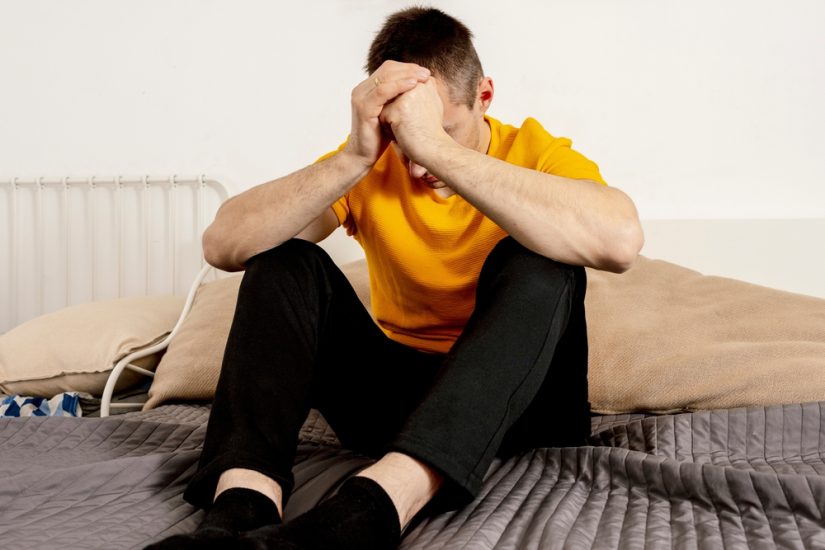- May 11, 2023
- by Shalini Murmu
- Bipolar Disorder
As we go about understanding the complexities of the human mind, we come across a harsh reality of what certain mental health conditions can do to us. Bipolar disorder is one such condition, affecting millions of people worldwide. This condition is often reflected by dramatic mood swings, oscillating between periods of high energy and elation to episodes of depression and lethargy. There are two primary subtypes of bipolar disorder: bipolar 1 and bipolar 2. While both types share similarities in terms of symptoms, there are also distinct differences that set them apart. In this article, we will explore the key differences between bipolar 1 and bipolar 2 and discuss how each subtype is diagnosed and treated.
Bipolar 1
Bipolar 1 disorder is the most intense form of the illness, identified by manic episodes that extend for at least a week. People go through high sensations of euphoria, energy, and creative ability during a manic episode. They may also act in an impulsive manner, such as overspending, risky sexual encounters, or drug abuse. In some cases, individuals with bipolar 1 disorder may experience psychotic symptoms, such as delusions or hallucinations.
Manic episodes are often followed by depressive episodes, which could last for at least two weeks. During this period, individuals feel sad, hopeless, and lethargic. They may distance themselves from activities they once enjoyed, experience changes in appetite and sleep patterns, and have difficulty concentrating. In some cases, individuals with bipolar 1 disorder may have suicidal thoughts or behaviors during a depressive episode.
Bipolar 2
Bipolar 2 disorder is a milder version of the condition, featured by hypomanic episodes that persist for at least four days. Though less extreme, hypomania is still quite similar to mania. During a hypomanic episode, individuals experience heightened moods and increased energy, but they are still able to function normally in their daily lives. They may also engage in impulsive behaviors, although these behaviors are usually not as extreme as those associated with bipolar 1 disorder.
Depressive episodes, which continue for at least two weeks, are frequently seen after hypomanic episodes. The symptoms of bipolar 2 depressive episodes are similar to those of bipolar 1 depressive episodes.
Diagnosis and Treatment
Both bipolar 1 and bipolar 2 are diagnosed based on a combination of symptoms, family background, and medical history. There is no single test that can diagnose bipolar disorder; therefore, it becomes more important to work with a mental health professional who has experience and expertise in treating conditions like this.
Treatment for bipolar disorder generally consists of a combination of both medication and therapy. Mood stabilizers, such as lithium or anticonvulsants, are often used to help control moods and prevent manic and depressive episodes from occurring.
Not to forget, how important and effective therapies can be. Therapy is a crucial part of treatment for bipolar disorder. Cognitive-behavioral therapy (CBT) and interpersonal therapy (IPT) are two forms of therapy that have been proven to be beneficial in treating bipolar disorder. These therapies help people identify and change unfavorable thought patterns and behaviors. Also, enhance interpersonal relationships.
Living with bipolar disorder may make life challenging, but with the right treatment and support, one can overcome this condition and lead a fulfilling life. Develop a thorough treatment plan that takes into account all facets of the condition by working with a mental health specialist. Support from family and friends can also be a valuable resource for individuals with bipolar disorder.
Key Differences Between Bipolar 1 and Bipolar 2
While bipolar 1 and bipolar 2 have many things in common, they also differ significantly in a number of key differences between the two subtypes. The primary difference is the presence of manic episodes in bipolar 1 disorder, whereas bipolar 2 disorder is characterized by hypomanic episodes.
A person’s ability to operate on a day-to-day basis can be greatly impacted by manic episodes, which are more severe in bipolar 1 disorder than hypomanic episodes in bipolar 2 disorder. Manic episodes can also lead to psychotic symptoms, which do not occur in hypomanic episodes.
People with bipolar 1 disorder are more likely to commit suicide than those who have bipolar 2 disorder. This is probably due to the severity of the manic episodes experienced by individuals with bipolar 1 disorder and the treatment approach to both conditions varies accordingly.
Restore Your Mental Well-being
Is your mental health on the verge of falling apart or do you feel you can no longer focus on your everyday chores like before? It may be time your mind is screaming for some expert care.
At NABHS, you’ll get the guidance and support to bring your mental health on track.
















